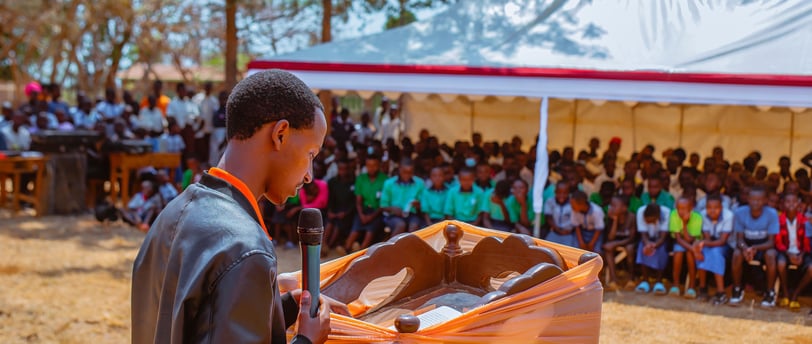Only seven years left to beat NTDs
By Bertrand BYISHIMO
11/8/20244 min read


Historically underfunded and overlooked in the global health agenda, the Neglected Tropical Diseases (NTDs) are a group of 20 “diseases of poverty” found in areas without access to clean water and sanitation, rural and hard-to-reach communities, and regions without quality healthcare services.
Neglected Tropical Diseases (NTDs) still pose a greater threat to the global health agenda due to less attention paid to them but with joint efforts from various people such as Non-Government Organisations and other organizations, there is a hope to eradicate them as the goal of 2023.
As the 2030 goal is a world free of NTDs, a keen attention as well as actionable actions to foster sustainable interventions that will allow us to reach that goal are required.
How far are we?
In line with the corrective efforts, 47 countries have eliminated at least one NTD, especially in the past 10 years:
The World Health Organisation has validated 10 countries in which lumphatic filariasis is no longer a public health problem.
Four countries in the Americas have been verified as “onchocerciasis-free” whereas Trachnoma is no longer a public health problem in many countries, after having been eliminated by five countries.
Also to mention, Human African Trupanosomiasis(sleeping sickness) is on track for elimination as a public health problem.
Those are some few tremendous accomplishments that the world can celebrate resulting from the London Declaration but the question is if, the remaining diseases can be eliminated in the next 7 remaining years to achieve 2030 SDGs.
During those celebrations, Bill Gates, the globally renowned philanthropist and billionaire, Bill Gates commented
“Thanks to this partnership, these neglected diseases are now getting the attention they deserve so fewer people have to suffer from these treatable conditions. There have been many successes in the past 5 years, but the job is not done yet,”.
Where do we need to invest?
On January 30 this year, the world observed the International NTDs day under the Theme “Act Now. Act Together. Invest in Neglected Tropical Diseases”. But where exactly are we going to invest?
Investing in NTDs is critical because billions of people worldwide are deare affected by these tropical diseases, they take the most marginalised groups in terms of their health and finances, and it is both economical and equitable to fund the initiatives to combat NTDs.
According to World Health Organisation (WHO) statistics at least 16 countries suffer from an 80 percent burden of global NTDs.
Below are five areas that experts recommend one can invest in to eradicate NTDs worldwide and save the lives of more than 1 billion people who suffer from them every year.
Investing in young people
There is a significant funding gap when it comes to the issue of youth-leading initiatives combating the NTDs, for instance, setting an example of meaningfully involving young people by building their capacity.
They are the generation that could see historic achievements in the fight against NTDs as well as have future generations be limited by the same preventable and treatable diseases that affected their parents and grandparents.
There is a need to break this cycle and to achieve that people have to believe in them as well as invest in them because their creativity and influence online and offline are unmatched and they can help the world in eradicating NTDs.
Sanitation
Most people tend to investigate other areas and forget to invest in sanitation yet it plays a big role in fighting against NTDs along with preventing exposure to diseases such as Soil-transmitted Helminthic Infections(STH), Schistosomiasis, or Trachoma, while safe water and hygienic conditions in health facilities and homes are essential for the management and care of many NTDs.
Helping people especially those in need to have full access to facilities for the safe disposal of human waste, along with having the ability to maintain hygienic conditions, through services such as garbage collection, industrial waste management, and wastewater treatment and disposal would be a solution to end NTDs.
Clean water and Hygiene
In most developing countries the cost of cleaning is still high and that results in a lack of hygiene and finally lead to the transmission of NTDs.
And the numbers show that around the world, 2 billion people still lack safe drinking water at home. Of those, 1.2 billion people have basic drinking water services. Between 2015 and 2020, 107 million people gained access to safely managed drinking water at home, and 115 million people gained access to safe toilets at home.
However, investing in such areas will help in changing the conditions in households and healthcare institutions, mostly the place that plays a crucial role in managing and treating many NTDs.
Several Awareness campaigns were conducted, but when you ask people to avoid contaminated water, they tell you that they have no any other source of water.
Media and Communication
Information sharing is one of the key roles in fighting these diseases, because they mostly come as a result of low hygiene and unawareness. Hence if more efforts were invested in media, community outreaches and campaigns, it would make the population more engaged.
From civil society advocates and community leaders, to global health experts and policymakers working across a diverse set of issues, a growing chorus is unifying behind a common goal to end NTDs: “We are 100 percent committed to end NTDs”.
Bertrand Byishimo is a Health Communications Professional based in the Rwandan Ministry of Health.
He is a Global Health Corps Fellow and currently running a storytelling project to eliminate Bilharzia in the Eastern part of Rwanda.
Beat NTDs
Fighting Neglected Tropical Diseases through community engagement.
Contact us
Newsletter
+250 785 957 204
© 2024. All rights reserved.
